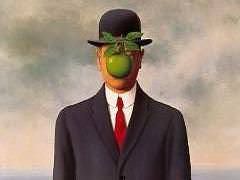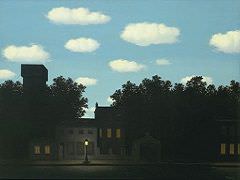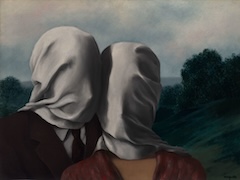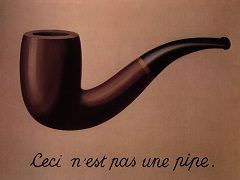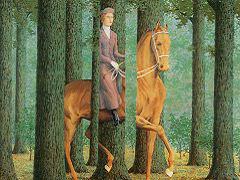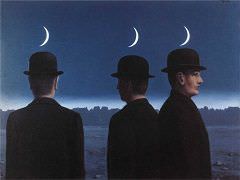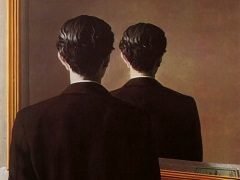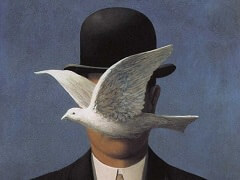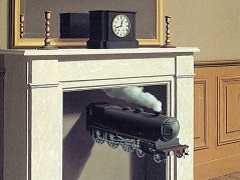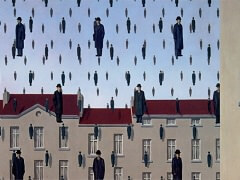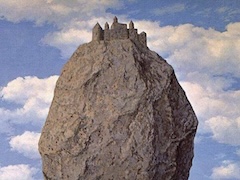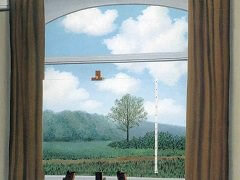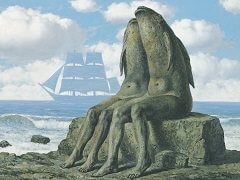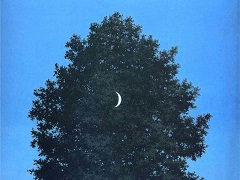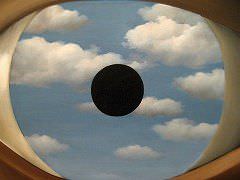Personal Values, 1952 by Rene Magritte
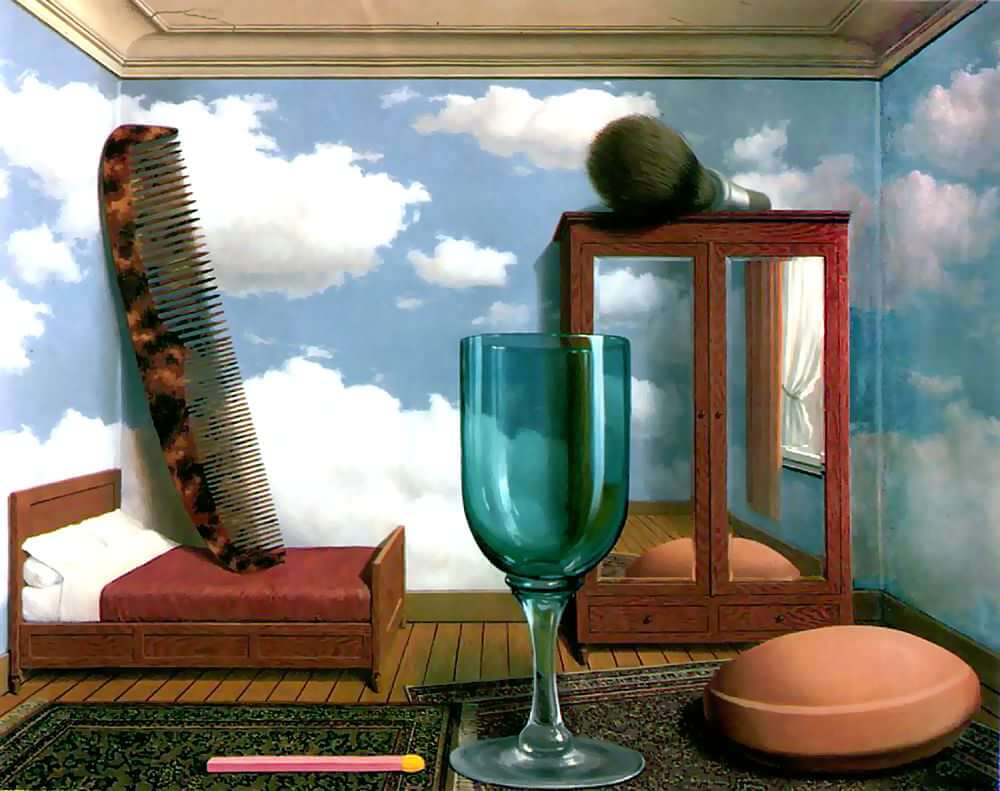
Although he is often grouped with Surrealists such as Salvador Dali, Max Ernst, and Yves Tanguy, Magritte took a somewhat different approach to painting. Rather than creating fantasy
imagery, he evoked the strangeness and ambiguity latent in reality. "I don't paint visions," he once said. "To the best of my capability, by painterly means, I describe objects - and the mutual relationship of objects - in
such a way that none of our habitual concepts or feelings is necessarily linked with them."
Here, the artist presents a room filled with familiar things, but he gives human proportions to these formerly unassuming props of everyday life, creating a sense of disorientation and incongruity. Inside and out are
inverted by his rendering of a skyscape on the interior walls of the room. The familiar becomes unfamiliar, the normal, strange; Magritte creates a paradoxical world that is, in his own words, "a defiance of common sense."
When he first saw this painting, Magritte's dealer, Alexander Iolas, was violently upset by it. Tellingly, the artist replied, "In my picture, the comb (and the other objects as well) has specifically lost its 'social
character,' it has become an object of useless luxury, which may, as you say, leave the spectator feeling helpless or even make him ill. Well, this is proof of the effectiveness of the picture."

